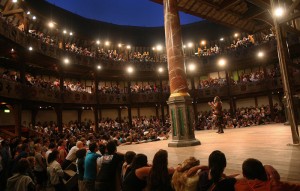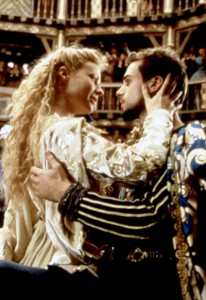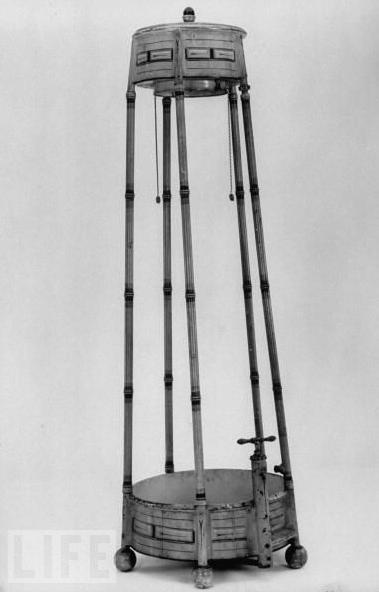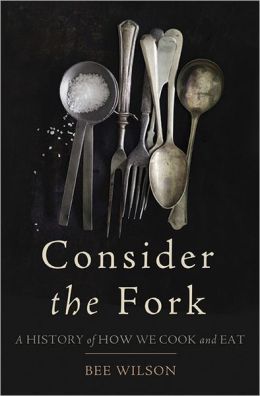The Jane Austen Gazetteer at The Republic of Pemberley is a compendium of information about the locations in each of Jane Austen’s novels using period resources. For example, the maps are from John Cary’s Maps of England from 1812 through 1818. In putting these together, we also examined a great many travel guides and relied heavily on Kearsley’s Traveller’s Entertaining Guide through Great Britain.
Kearsley gives you the standard description of roads and cross-roads, distances from London and from other locations. In addition it provides some historical and topographical information for many of the towns along the way.
 Bath, for example, ” has been famous from the time of the Romans for its hot springs, the most remarkable in England and inferior to few in Europe: they are not only used as baths, but internally as a medicine; and great benefit is derived from them in gouty, paralytic, bilious and other cases. The reputation of these waters is so much increased that Bath is become the principal resort, next to the metropolis, for persons of rank and fortune and for the constant residence of opulent invalids as well as numerous votaries of dissipation. In splendour and elegance of buildings it exceeds every town in England, being constructed of a white stone of which the surrounding soil is chiefly composed. It is seated on the river Avon in a valley, and, from the reflection of the sun’s rays from the white soil, it is very hot in summer. The principal seasons for the waters are spring and autumn. The poor, who come here to drink them, may be received in a magnificent hospital. It is supposed to be very ancient. King Edgar was crowned here. On the l. is Prior-park, lord Hawarden.” Then it goes on to list the York Hotel, White Hart, White Lion, Lamb as places you might want to stay.
Bath, for example, ” has been famous from the time of the Romans for its hot springs, the most remarkable in England and inferior to few in Europe: they are not only used as baths, but internally as a medicine; and great benefit is derived from them in gouty, paralytic, bilious and other cases. The reputation of these waters is so much increased that Bath is become the principal resort, next to the metropolis, for persons of rank and fortune and for the constant residence of opulent invalids as well as numerous votaries of dissipation. In splendour and elegance of buildings it exceeds every town in England, being constructed of a white stone of which the surrounding soil is chiefly composed. It is seated on the river Avon in a valley, and, from the reflection of the sun’s rays from the white soil, it is very hot in summer. The principal seasons for the waters are spring and autumn. The poor, who come here to drink them, may be received in a magnificent hospital. It is supposed to be very ancient. King Edgar was crowned here. On the l. is Prior-park, lord Hawarden.” Then it goes on to list the York Hotel, White Hart, White Lion, Lamb as places you might want to stay.
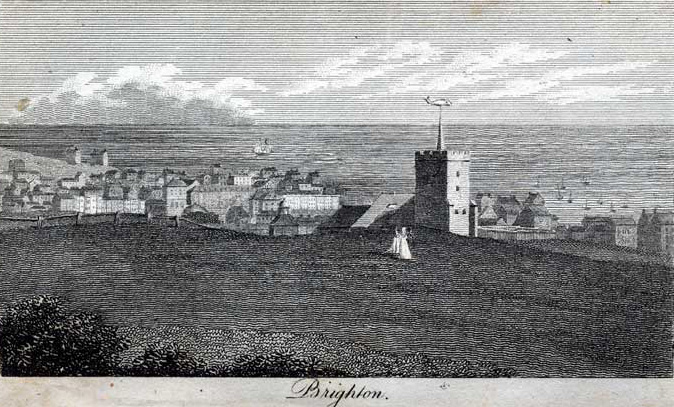 About Brighton (or Brightelmstone as it was known), Kearsley writes, “Brighthelmston was a poor town inhabited chiefly by fishermen; but having for some years past become a fashionable place of resort, on account of its convenience for bathing, it has been enlarged by many handsome new buildings. The Steine , a fine lawn between the town and the sea forms a beautiful and favourite resort for the company. Here Charles II embarked for France in 1651 after the battle of Worcester. Great flocks of sheep are fed on the neighbouring hills . This town is sometimes called Brighton. It is the station of the packet boats to and from Dieppe in time of peace . The prince of Wales has a bathing residence here.”
About Brighton (or Brightelmstone as it was known), Kearsley writes, “Brighthelmston was a poor town inhabited chiefly by fishermen; but having for some years past become a fashionable place of resort, on account of its convenience for bathing, it has been enlarged by many handsome new buildings. The Steine , a fine lawn between the town and the sea forms a beautiful and favourite resort for the company. Here Charles II embarked for France in 1651 after the battle of Worcester. Great flocks of sheep are fed on the neighbouring hills . This town is sometimes called Brighton. It is the station of the packet boats to and from Dieppe in time of peace . The prince of Wales has a bathing residence here.”
Oxford, according to Kearsley, is “a celebrated university, and a bishop’s see. Besides the cathedral it has thirteen parish churches. It is seated at the confluence of the Thames and Cherwell, on an emininence. The town is three miles in circumference, and is of a circular form. It consists chiefly of two spacious streets, crossing each other in the middle of the town. The university is said to have been founded by the immortal Alfred, receiving from him many privileges and large revenues. Here are twenty colleges and five halls, several of which are in the streets, and give the city an air of magnificence. The colleges are Univeristy, Baliol, Merton, Exeter, Oriel, Queen’s, Nw, Lincoln, All-Souls, Magdalen, Brasenose, Corpus Christi, Christchurch, Trinity, St. John Baptist’s, Jesus, Wadham, Pembroke, Worcester, and Hertfrod. The halls are Alban, Edmund, St. Mary’s, New Inn, and ST. Mary Magdalen. All travellers agree in confessing that there is not such another group of buildings nor such another university in the world.” While there, you might stay at Star, Cross, King’s Arms, Angel, &c..
Kearsley’s is not the only guide to provide this kind of information. Paterson’s Roads also interrupts the long lists of towns on each road with descriptions of various places of interest. Cary’s New Itinerary is mostly just an itinerary. The descriptions found in Cary concern which buildings you’ll pass on a particular route (not unlike “take the second left after the Dunkin Donuts”). Most guides also provide the traveller with a list of available inns. And these are not all. You might like to take a look at A Guide to All the Watering and Sea Bathing Places for 1813 or Crosby’s Complete Pocket Gazetteer of England and Wales. Poke around Google Books. You’ll be amazed at the number of travel guides to be had.



